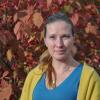Research topics
The HYVIÖ project uses mixed-methods approach to analyse the current state and development needs of the suburbs together with citizens, urban planners and experts. Our research focuses on the accessibility to and role of green and water areas in supporting wellbeing, and on the socio-economic variation in accessibility to and quality of green and water areas between suburbs. Our project examines the liveability of the suburbs and the wellbeing of the residents from both the urban planners’ and residents’ point of view. The project utilises a spatial multi-criteria analysis tool (StrateGIS) developed by Syke and an environmental health survey previously collected by Finnish Institute for Health and Welfare (THL). We will further collect data through expert workshops, resident surveys and interviews. The project provides information on the health effects related to living environment, especially to the fair accessibility of green spaces and water bodies. In addition, we compare urban planners’ views of a good living environment with the residents’ experiences. Information about residents’ experiences of a comfortable environment and possible conflicts with the comfort factors identified by urban planners can be used directly in the development plans of the suburbs under study. In the longer term, good planning and a restorative living environment can lead to financial savings, for example, in the city's healthcare costs.
Results
- Tiitu, M., Nyberg, E., Halonen, J. I., Pasanen, T., Viinikka, A., Lehtimäki, J., Lanki, T. & Vierikko, K. (2024). Comparing city practitioners’ and residents’ perceptions of a liveable neighbourhood in Finland. European Planning Studies, 32(5), 1118–1145. https://doi.org/10.1080/09654313.2023.2263053
- Pasanen, T. P., Lanki, T., Siponen, T., Turunen A. W., Tiittanen, P., Heikinheimo, V., Tiitu, M., Viinikka, A. & Halonen J. I. (2024). What Makes a Liveable Neighborhood? Role of Socio-Demographic, Dwelling, and Environmental Factors and Participation in Finnish Urban and Suburban Areas. J Urban Health 101, 1207–1220. https://doi.org/10.1007/s11524-024-00927-y
- Viinikka, A., Tiitu, M., Heikinheimo V., Halonen, J. I., Nyberg, E. & Vierikko, K. (2023). Associations of neighborhood-level socioeconomic status, accessibility, and quality of green spaces in Finnish urban regions. Applied Geography 157, 102973. https://doi.org/10.1016/j.apgeog.2023.102973
- Heikinheimo, V., Tiitu, M. & Viinikka, A. (2023). Data on different types of green spaces and their accessibility in the seven largest urban regions in Finland. Data in Brief 50: 109458. https://doi.org/10.1016/j.dib.2023.109458
